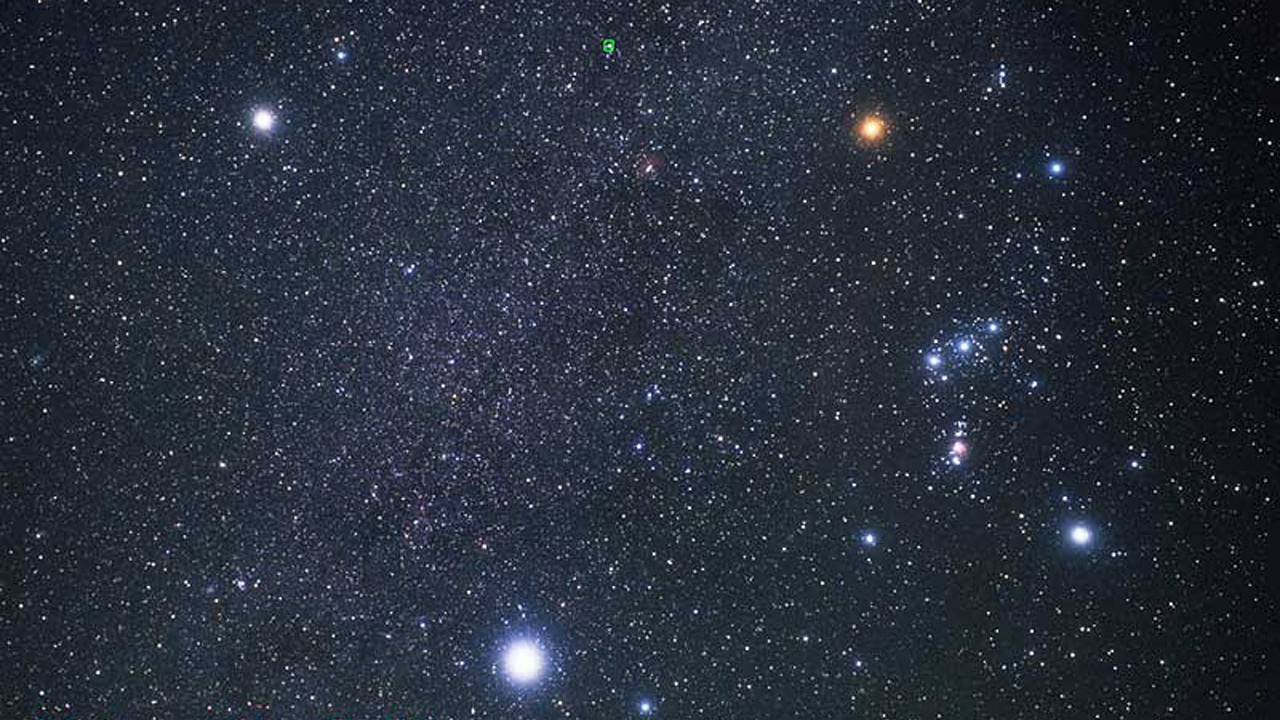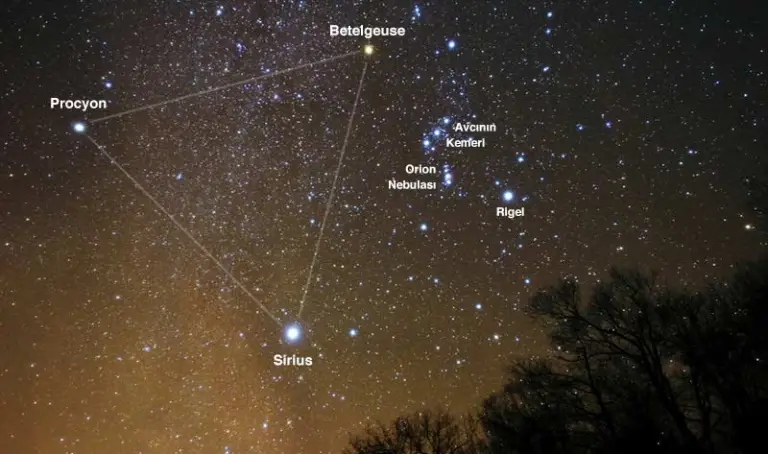February's new moon makes this a great night to view the Winter Triangle
There will be no light pollution from the moon, making this a great opportunity to take in the night sky.

If you're looking for the moon, you won't be able to see it tonight. That's because the moon is entering the new moon phase, during which the half of its surface that faces the Earth will be in complete darkness.
The moon appears in four main phases over a period of 29.5 days, starting with the new moon, growing to the first quarter moon (in which the moon is half-lit), then growing to the full moon, and finally shrinking down to the last quarter moon (in which the moon is also half-lit).
This cycle is due to the position of the moon, the Earth, and the sun. The moon does not emit its own light but instead reflects the light from the sun, so when the moon is between the Earth and the sun, its illuminated face is facing the sun, while the face that we see is dark. The full moon, on the other hand, occurs when the Earth is between the moon and the sun, allowing us to see the full illuminated face. (And when the positioning of the three celestial bodies is just right, given the moon's tilted orbit, we end up with solar and lunar eclipses.)
Related: Night sky, February 2023: What you can see tonight

Looking for a telescope to see the night sky during new moons? We recommend the Celestron Astro Fi 102 as the top pick in our best beginner's telescope guide.
While you won't be able to see the moon tonight, the dark skies are perfect for stargazing, since the moon will not be polluting the night sky with its reflected sunlight. That gives you a chance to see some fainter celestial objects — so long as you get away from manmade light pollution!
While you're out, make sure to locate and enjoy the Winter Triangle. This asterism, or grouping of stars, is formed by the three brightest visible stars of the season: Sirius, Betelgeuse and Procyon. If you can locate the Winter Triangle, from there you can spot their respective constellations: Canis Major, Orion, and Canis Minor.
At sunset, look to the southeast to spot the Winter Triangle. It might be easiest to locate well-known Orion, from which you can find Betelgeuse. It is the second brightest star in the constellation and forms the Hunter's right shoulder.
Get the Space.com Newsletter
Breaking space news, the latest updates on rocket launches, skywatching events and more!

Jupiter and Venus are excellent objects of interest this month in the western skies, and the two planets are in fact moving closer together throughout February before meeting up on March 1. Catch them early, though; the pair set fairly early in the evening. Mars is also still fairly bright throughout the month.
Read more: The brightest planets in February's night sky: How to see them (and when)
If you're an experienced skywatcher with a large telescope, there is also a comet making what could be its first and only pass by the sun, which could make for a challenging but fascinating target in the moonless sky.
If you're new to stargazing, or you're looking for an equipment upgrade, our lists of the best telescopes and best binoculars are a helpful tool for getting a close-up look at the night sky. And if you're looking to take photos of the night sky, check out our guides to the best cameras for astrophotography and best lenses for astrophotography.
Follow Stefanie Waldek on Twitter @StefanieWaldek. Follow us on Twitter @Spacedotcom and on Facebook.
Join our Space Forums to keep talking space on the latest missions, night sky and more! And if you have a news tip, correction or comment, let us know at: community@space.com.

Space.com contributing writer Stefanie Waldek is a self-taught space nerd and aviation geek who is passionate about all things spaceflight and astronomy. With a background in travel and design journalism, as well as a Bachelor of Arts degree from New York University, she specializes in the budding space tourism industry and Earth-based astrotourism. In her free time, you can find her watching rocket launches or looking up at the stars, wondering what is out there. Learn more about her work at www.stefaniewaldek.com.









